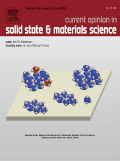
CURRENT OPINION IN SOLID STATE & MATERIALS SCIENCE
Scope & Guideline
Elevating discourse in solid-state advancements.
Introduction
Aims and Scopes
- Machine Learning Applications in Materials Science:
The journal highlights the increasing integration of machine learning techniques in materials research, showcasing how these methods can accelerate the discovery and optimization of new materials. - Electrochemical Technologies and Applications:
A core area of focus is the exploration of electrochemical processes, particularly in the context of energy storage and conversion, including batteries and sensors. - 2D Materials and Their Functionalization:
The journal consistently addresses the development and application of two-dimensional materials, including graphene and transition metal dichalcogenides, emphasizing their unique properties and potential uses. - High-Throughput Synthesis and Characterization:
There is a significant emphasis on high-throughput methods for materials synthesis and characterization, facilitating rapid advancements and the exploration of new material compositions. - Nanostructured Materials and Metamaterials:
The exploration of nanostructured materials and metamaterials represents a unique contribution, focusing on their design, fabrication, and potential applications in various technological domains. - Mechanical Properties and Testing Innovations:
Research related to the mechanical properties of materials, including innovative testing methods such as nanoindentation and in situ techniques, is a consistent theme in the journal. - Interdisciplinary Approaches in Materials Science:
The journal promotes interdisciplinary research, integrating concepts from physics, chemistry, biology, and engineering to address complex materials challenges.
Trending and Emerging
- Integration of Artificial Intelligence in Materials Research:
There is a significant increase in the exploration of artificial intelligence and machine learning techniques, indicating a trend towards computational approaches that enhance materials design and characterization. - Development of Multifunctional Materials:
Emerging research focuses on multifunctional materials that serve multiple purposes, such as energy harvesting, sensing, and structural applications, highlighting their versatility and potential impact. - Sustainability and Eco-Friendly Materials:
Themes around sustainable materials, including biodegradable polymers and eco-friendly manufacturing processes, are gaining traction as the field responds to global sustainability challenges. - Advanced Characterization Techniques:
Recent publications emphasize the development of innovative characterization methods, such as in situ and operando techniques, which provide deeper insights into material behaviors under real-world conditions. - Exploration of Quantum and Topological Materials:
There is a growing interest in quantum and topological materials, reflecting advancements in understanding their unique electronic properties and potential applications in next-generation technologies.
Declining or Waning
- Traditional Bulk Material Studies:
There has been a noticeable decrease in publications focused on traditional bulk materials, as researchers increasingly turn their attention to nanostructured and 2D materials, which offer more innovative properties and applications. - Conventional Manufacturing Techniques:
Research centered on conventional manufacturing processes, such as standard casting and machining, appears to be waning in favor of advanced methods like additive manufacturing and high-throughput techniques. - Fundamental Studies on Classical Materials:
While foundational studies are important, there seems to be a declining interest in purely theoretical or classical studies of well-established materials, as the field moves toward applied research with practical implications. - Single-Material Focus:
There is a decreasing emphasis on studies that focus solely on a single material type, as the trend shifts towards multifunctional and composite materials that combine the properties of multiple constituents.
Similar Journals

Solids
Fostering Innovation in Physics and Materials ScienceSolids is a distinguished peer-reviewed journal published by MDPI, dedicated to the comprehensive exploration of the properties, applications, and advancements in solid materials. Starting its journey in 2020, this Open Access journal provides a dynamic platform for researchers and professionals in the fields of physics, astronomy, materials science, and chemistry, enabling them to disseminate their findings to a global audience without barriers. With an emerging presence in the academic landscape, Solids has established a reputation reflected in its Scopus rankings, including a commendable position of #28 out of 81 in Physics and Astronomy and #83 out of 196 in Materials Science, demonstrating its impact and relevance within these vibrant fields. The journal's objectives extend to fostering interdisciplinary discussions and collaboration, making it an essential resource for those seeking to advance their understanding of solid materials and their innovative applications. Researchers and students alike are encouraged to contribute to this essential dialogue, engaging with the latest research and insights in solid-state science from around the globe.

Materials Futures
Pioneering insights in biomaterials for a sustainable tomorrow.Materials Futures, an esteemed journal published by IOP Publishing Ltd, stands out as a pivotal resource in the field of Materials Science, with a particular emphasis on Biomaterials. Launched in 2022 and operating under an Open Access model, the journal aims to foster accessibility and rapid dissemination of pioneering research, thus catering to the diverse needs of researchers, professionals, and students globally. With a commendable Scopus Rank of #46 out of 137 in its category, placing it in the 66th percentile, and recognized as a Q1 journal as of 2023, Materials Futures provides a vital platform for cutting-edge studies and innovations that address contemporary challenges in materials science. As the journal evolves through its convergence period from 2022 to 2024, it continues to attract high-quality submissions aimed at advancing knowledge and applications within the biomaterials sector, reflecting its commitment to contributing vital insights and fostering collaboration across disciplines. Explore Materials Futures for your research endeavors and join a community dedicated to shaping the future of materials.
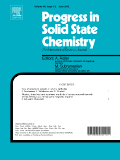
PROGRESS IN SOLID STATE CHEMISTRY
Exploring the Depths of Solid State ResearchPROGRESS IN SOLID STATE CHEMISTRY, published by PERGAMON-ELSEVIER SCIENCE LTD, serves as a pivotal platform for disseminating cutting-edge research and advancements in the field of solid state chemistry. With an impressive impact factor and a respected status, this journal consistently ranks in the Q1 category across multiple disciplines, including Condensed Matter Physics, Materials Science, and Physical and Theoretical Chemistry. Following a rigorous peer-review process, it features articles that explore theoretical frameworks and experimental findings, thereby fostering innovation and collaboration among researchers and professionals. Although it does not adopt an open access model, its substantial reach and high Scopus rankings—19th in Condensed Matter Physics, 14th in Physical and Theoretical Chemistry, and 48th in General Materials Science—underscore its influence in shaping the future of materials research. Established in 1964, the journal continues to contribute significantly to the academic community, bridging the gap between theory and practical application in solid state materials.
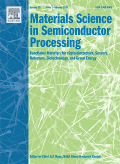
MATERIALS SCIENCE IN SEMICONDUCTOR PROCESSING
Exploring the Frontiers of Materials ScienceMATERIALS SCIENCE IN SEMICONDUCTOR PROCESSING, published by ELSEVIER SCI LTD, is a premier journal dedicated to advancing knowledge in the field of semiconductor processing, an area pivotal to the development of modern electronic applications. With an ISSN of 1369-8001 and an E-ISSN of 1873-4081, this journal exemplifies excellence with a remarkable standing in various disciplines, as indicated by its 2023 Scopus rankings—occupying the top quartile (Q1) in Condensed Matter Physics and Mechanical Engineering, and Q2 in Materials Science and Mechanics of Materials. The journal not only provides a platform for high-impact original research, reviews, and significant findings but also bridges theoretical and practical implications within the field. Operating under a publication timeline that extends from 1998 to 2025, it remains an essential resource for researchers, professionals, and students seeking to deepen their understanding of semiconductor materials and processes. Although not an open-access journal, it offers robust options for access, ensuring that cutting-edge developments are made available to the scholarly community.
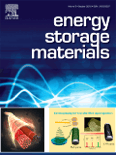
Energy Storage Materials
Shaping the future of energy through cutting-edge research.Energy Storage Materials, an esteemed journal published by Elsevier, serves as a pivotal platform for the advancement of knowledge in the vital fields of energy engineering, materials science, and sustainability. Established in 2015, it has quickly ascended to the top echelons of academic publishing, boasting an impressive Q1 ranking in categories such as Energy Engineering and Power Technology, Materials Science, and Renewable Energy, Sustainability and the Environment, all as of 2023. The journal's high impact factor underscores its significance and relevance, with Scopus rankings placing it among the elite in its domains. Through a commitment to rigorous peer review and open scientific discourse, Energy Storage Materials aims to foster innovative research and applications that address the global energy challenge. This journal is essential reading for researchers, professionals, and students dedicated to enhancing energy storage technologies and contributing to a sustainable future.
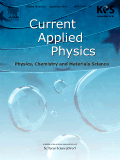
CURRENT APPLIED PHYSICS
Pioneering Research for Practical Applications.Current Applied Physics is a leading journal published by Elsevier, specializing in the dynamic fields of Physics and Materials Science. With an ISSN of 1567-1739 and an E-ISSN of 1878-1675, this journal focuses on the latest advancements and applications of physics principles in various practical domains. Operating from the innovative hub of Amsterdam, Netherlands, Current Applied Physics occupies a significant niche in the scientific community, evidenced by its Q2 ranking in both the Physics and Astronomy and Materials Science categories for the year 2023, along with impressive Scopus rankings that highlight its relevance in the fields of General Physics and General Materials Science. The journal's scope encompasses a wide range of topics, fostering interdisciplinary collaboration and facilitating the exchange of knowledge among researchers, professionals, and students. Each issue features peer-reviewed articles that contribute to the understanding and application of physical sciences, making it an essential resource for those aiming to stay at the forefront of research and innovation in applied physics.
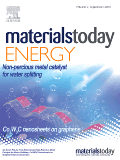
Materials Today Energy
Innovating Energy Materials for a Sustainable FutureMaterials Today Energy is a premier journal published by Elsevier, focusing on the interdisciplinary field of energy materials. With an ISSN of 2468-6069, the journal is renowned for its impactful research as evidenced by its impressive Q1 quartile rankings in multiple categories including Energy Engineering and Power Technology, Fuel Technology, and Renewable Energy. It stands out with strong Scopus rankings, highlighting its significance in the respective research communities, such as being ranked 3rd in Nuclear Energy and Engineering. Established from 2016 to 2024, the journal aims to provide a platform for innovative research that addresses the global demands for sustainable energy solutions. Although it is not open access, Materials Today Energy is accessible to a broad audience, encouraging collaborations among researchers, professionals, and students in the pursuit of advancing materials science and energy technologies. This makes it an essential resource for those looking to remain at the forefront of discoveries that shape the future of energy.

Interdisciplinary Materials
Advancing the Frontiers of Materials ScienceInterdisciplinary Materials is a prominent Open Access journal published by Wiley, dedicated to advancing knowledge and innovation in the field of materials science. With an ISSN of 2767-4401 and an E-ISSN of 2767-441X, this journal seeks to foster interdisciplinary collaborations and promote high-quality research that bridges the gap between materials engineering, physics, chemistry, and emerging technologies. Established in 2022, it aims to provide free and unrestricted access to cutting-edge research findings, ensuring that pivotal discoveries reach a broad audience. Interdisciplinary Materials assesses submissions rigorously, aspiring to achieve high impact and relevance, catering to researchers, professionals, and students keen on exploring innovative materials and their applications. With its commitment to scientific excellence, this journal stands as a vital resource for those looking to stay abreast of the latest advancements in materials research.

Electrochemical Energy Reviews
Empowering Scholars to Shape Tomorrow's Energy SolutionsElectrochemical Energy Reviews, published by SpringerNature, serves as an essential platform for the dissemination of cutting-edge research in the fields of electrochemistry, material science, and energy engineering. With an impressive impact factor and ranked in the Q1 category across multiple disciplines including Chemical Engineering and Energy Technology, this journal highlights its commitment to advancing knowledge and innovation within the energy sector. Operating since 2018, the journal not only provides a valuable resource for researchers and professionals but also invites contributions from students and emerging scholars interested in the pivotal role of electrochemical processes in sustainable energy solutions. Published in Germany and widely accessible to the global research community, Electrochemical Energy Reviews is an indispensable reference for those keen on exploring the future of energy technologies.

SOLID STATE COMMUNICATIONS
Connecting Researchers with Cutting-Edge DiscoveriesSOLID STATE COMMUNICATIONS is a prestigious journal published by Pergamon-Elsevier Science Ltd, dedicated to disseminating cutting-edge research in the fields of Chemistry, Condensed Matter Physics, and Materials Chemistry. With an ISSN of 0038-1098 and an E-ISSN of 1879-2766, the journal has established itself as a vital resource for researchers and professionals seeking to explore the fundamental properties and innovative applications of solid-state materials. As of 2023, it boasts a commendable standing, ranking in the Q2 quartile across its various categories, reflecting its impactful contributions to the scientific community. The journal is indexed in Scopus, further validating its relevance and quality, with notable ranks close to the median percentile in key areas. While SOLID STATE COMMUNICATIONS does not currently offer Open Access options, it remains a highly regarded source for rigorous scientific inquiry and open discussions, with a publication history dating back to 1963 and continuing to 2024. The journal serves as an essential platform for disseminating groundbreaking findings and fostering collaboration within the vibrant fields of solid state science.